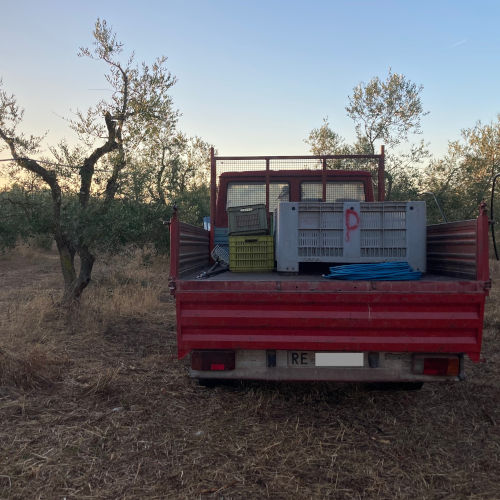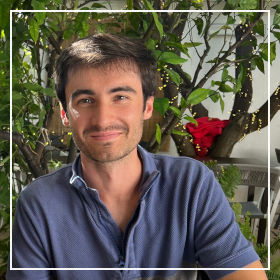Between February 8 and 9, 2024, two fleets arrived in Brindisi, a port city in the southern Italian region of Puglia.
The first came by land: a parade of 100 tractors that local farmers rolled in from the city’s countryside. Cutting their engines on the principal roadway leading to Brindisi’s center, they unfurled Italian flags and waved banners reading “Betrayed by Europe” and, in English, “No Farmers. No Food. No Future.”
The second came by sea: a ship operated by a pan-European N.G.O. that carried ashore 261 African and Middle Eastern migrants, rescued in international waters. At the direction of Italy’s Ministry of the Interior, the vessel was sequestered and its passengers detained by Italian police.
No obvious connection exists between these two events, at least not until you head beyond city limits. In Brindisi’s provincial hinterlands, where I am currently completing fieldwork, newly arrived migrants like those rescued at sea are often the only ones visibly working in the fields. Housed in hotels converted into “centers of hospitality” with EU money, these migrants gather at sunrise around rotaries, waiting to be enlisted by local landowners as braccianti agricoli, or low-wage, usually uncontracted day labourers. These braccianti, however, are not the public face of current protests, where migrant labour has scarcely been mentioned at all. It is the landowners, and those who rent plots from them to grow vegetables and grain, who loaded up their tractors, skeptical about the future of their businesses. Indeed, citing economic difficulty, more than 2000 farms in Puglia closed for good in 2023 alone.
Selectively permeable European borders have made it easy for some Italian farmers feeling financially squeezed to punch down.
In Brindisi’s countryside – still dotted with ostentatious castles of erstwhile feudal lords – the tractor parade and the ship are two sides of the same Euro(pe). Although Italy’s post-war riforma fondiaria and the introduction of Europe’s Common Agricultural Policy (CAP) in 1962 were represented as means to protect farming and guarantee profits in a free, supranationally integrated marketplace, the farmers in Brindisi say that the promise of welfare has run out of steam. Protestors report suffocation by high taxes, rising gas prices, and competition from unregulated, cheaper food imported duty-free from beyond the EU. Many slam the EU’s 2019 Green Deal reforms for imposing guidelines for a lower carbon future that are unworkable given farmers’ vanishing bottom line.
Selectively permeable European borders have made it easy for some Italian farmers feeling financially squeezed to punch down. As a worker in one migrant hospitality center told me recently, many Italian farmers “transfer their precarity” to poorly paid braccianti who often do not complain about poor treatment and wages because, as non-citizens, they have no right and no contract with which to do so. In any case, the promise of higher pay elsewhere in the Eurozone is too alluring for many of these migrant workers to risk any critical attention. Most manage to leave the countryside for northern Schengen Zone countries within a year of their arrival.
The Ends of Integration
My perspective on recent protests is based on the fact that I came to Italy to understand how almost seventy years of European integration look from southern Europe today. In Puglia, this political and economic process has acquired a distinctly environmental character. My research begins with the condition of a bacterial epidemic called Xylella fastidiosa, that has withered more than one third of the region’s 60 million olive trees. EU regulatory protocol to stem the spread of the infestation stipulates that diseased trees be felled, a measure that has drawn the ire of residents in a place where individual olive trees can, and have, lived for centuries. Yet it is partially their status as a monocrop, fueled by EU policy, that made olives so vulnerable to infection in the first place.
My primary interlocutors depart ideologically from those who boarded their tractors in Brindisi. They are small-scale cultivators who practice biodiverse farming, in part to mollify the unintended consequences of intensive monoculture such as the Xylella epidemic’s potency. Yet they have their work cut out for them. They say that decades of European agricultural planning, right down to new epidemic regulation, have ended up favouring large landowners, often distributing subsidies on the basis of hectares owned. Over a dinner discussion about the farmer protests, a small-scale farmer named Teresa told me in exasperation that, “Life here is structured for intensive monoculture. That’s just how it is.”

Sentiments reverberating throughout the tractor caravan in Brindisi, where protecting neither bio- nor human diversity has been proposed, reflect this assessment. Indeed, farmers’ demands have scarcely deviated from the social, economic, and environmental conditions structured by the intensive monoculture industry in Europe. Although not all protestors practice that variety of agriculture, their requests for reform – less regulation, lower taxes, freer-flowing gasoline – are those that have permitted intensive monoculture since the 1960s to thrive in Puglia. Hard-right Italian premier Giorgia Meloni’s claim of victory last week over the EU’s decision not to impose further restriction on the use of agricultural pesticides is yet another sign that intensive monoculture is, in the short term, here to stay.
Where I live and work, in towns undergoing rapid atmospheric and demographic desertification, most of my farmer interlocutors – biodiverse and monocultural alike – are often one epidemic outbreak or freak climate event away from folding. Yet many are unperturbed by the surging “for sale” signs that adorn adjacent land parcels, many of which are now being bought up by a multinational electricity company and converted into solar farms. At a recent workshop I attended on how to graft olive trees at risk for epidemic infection, a middle-aged farmworker named Cosimo defended his decision to regenerate his land without capitulating to European guidelines. Wiping away tears, he testified: “We are not the owners of this landscape; we are its custodians. And we have to safeguard it.”
Intensive monoculture is, at its core, an environmental means of structuring unequal social relations.
What might it look like to safeguard a landscape that seems to teeter on the edge of disintegration; often a risk and not an asset? From my still-in-progress fieldwork, it is clear to me that the answer might require a conceptual premise: that of viewing in parallel the two fleets that arrived in Brindisi in early February. Juxtaposing them to my own research on the Xylella epidemic offers a salient reminder that intensive monoculture is, at its core, an environmental means of structuring unequal social relations. Valorising recent protests uncritically, or dismissing them as reactionary, risks eliding the convergences and intricacies of that inequality in rural Europe today. To be sure, initiatives to reintegrate the social and environmental components of agriculture – to protect both land and people, regardless of national origin – are not currently on the negotiating table in southern Italy. But as a heuristic for thinking about contemporary food production, and even the EU at large, foregrounding the need for this reintegration is not a bad place to start.
Featured image by the author.





